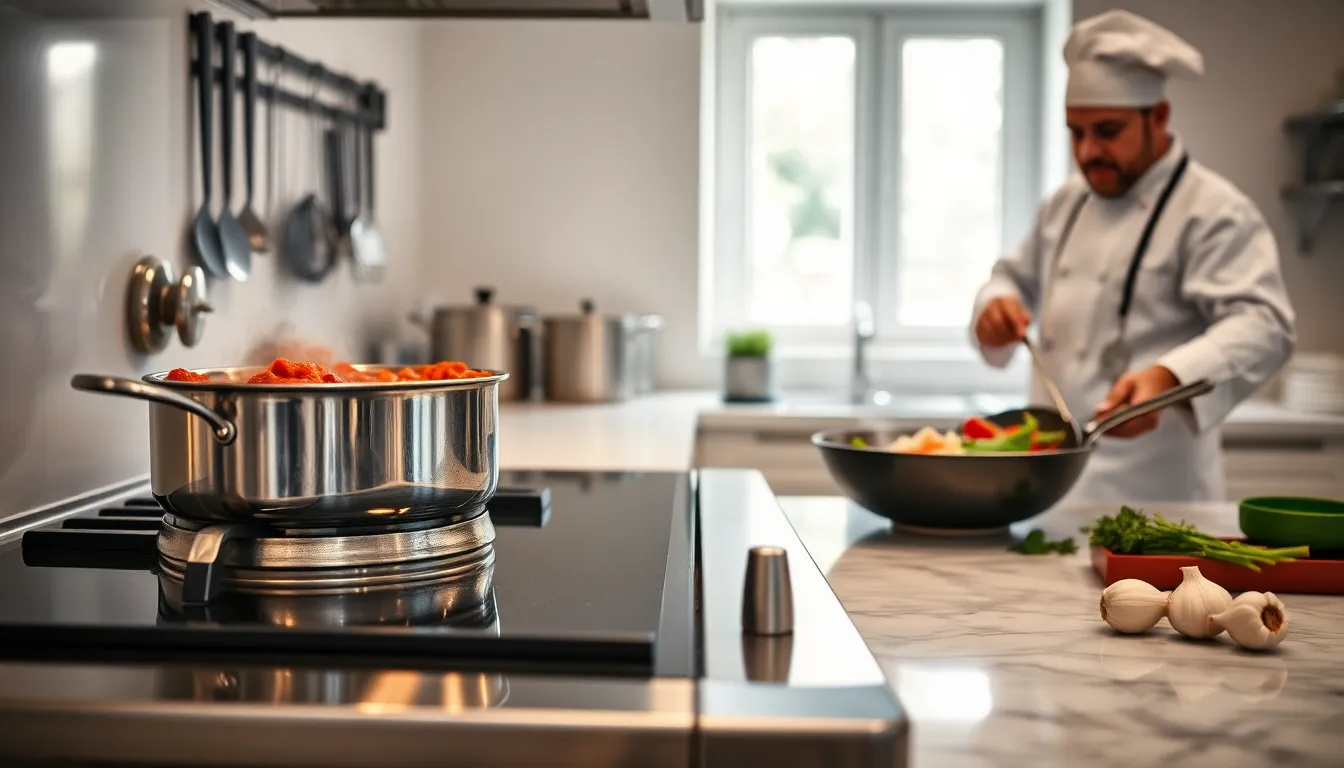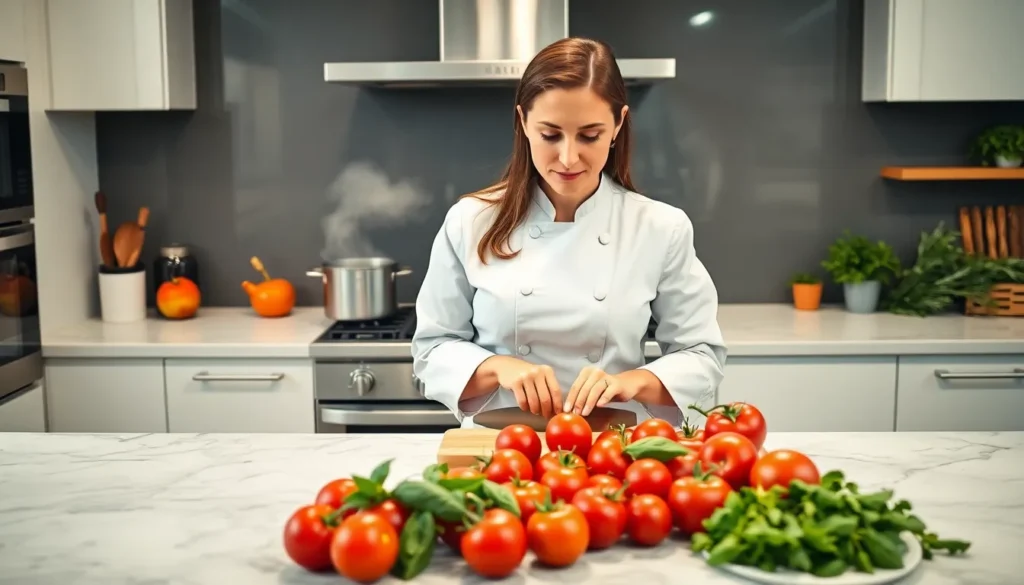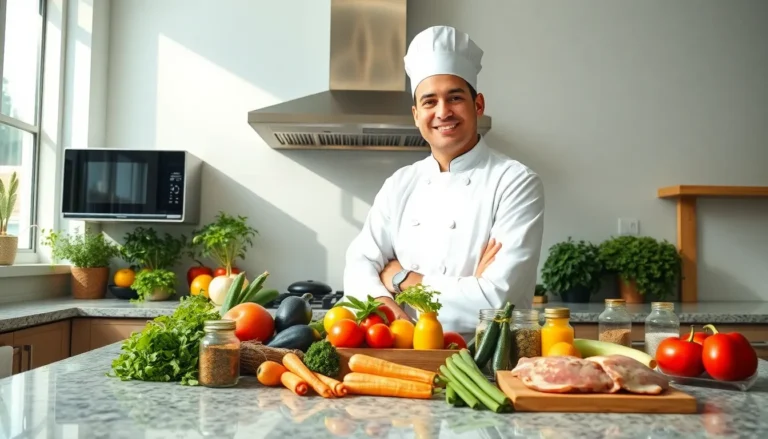Table of Contents
ToggleWhen one thinks of Italian cuisine, visions of sun-drenched tomatoes, fresh basil, and rich, hearty pasta come to mind. But there’s more to it than just slapping some marinara on spaghetti. Understanding Italian cooking techniques is essential for anyone looking to transform their home kitchen into a slice of La Dolce Vita. Buckle up and prepare to jump into the fundamentals of Italian cooking where each technique is a key ingredient in the recipe of culinary success, it’s practically a passport to flavor town.
Understanding Fundamental Italian Cooking Techniques

Italian cooking is rooted in tradition, and understanding its fundamental techniques is the first step toward culinary excellence. At its heart, Italian cooking emphasizes simplicity, allowing flavors to shine without unnecessary fuss. Techniques like simmering and sautéing form the backbone of many Italian dishes.
Simmering, or ‘sobbollire,’ brings out deep flavors in sauces and allows ingredients to meld harmoniously. Picture a pot of ragù bubbling gently on the stovetop: patience here is key. Meanwhile, sautéing, or ‘soffritto,’ involves cooking finely chopped vegetables in olive oil at medium heat, igniting a dance of aromas that serves as the flavor foundation for countless recipes. In these early stages, Italian chefs hone their skills with precision, revealing a love of fresh, high-quality ingredients.
Understanding these basic techniques lays a solid foundation. By mastering them, cooks can adapt recipes and create signature dishes that carry a personal touch.
The Importance of Ingredients in Italian Cuisine
In Italy, one mantra reigns supreme: fresh ingredients make all the difference. The Italian pride in their culinary traditions reflects their deep respect for nature’s bounty. Whether it’s aromatic herbs, vibrant vegetables, or artisanal cheeses, the quality of each component elevates a dish from ordinary to extraordinary.
Take tomatoes, for example. San Marzano tomatoes are the gold standard for Italian sauces: their sweetness and low acidity give a rich depth that cannot be replicated with standard varieties. Equally important are the herbs and spices. Dishes like Caprese salad showcase the importance of ripe tomatoes and fresh mozzarella, harmonizing flavors into a delightful summer medley.
So, a commitment to sourcing top-notch ingredients manifests in every Italian dish, enhancing flavors and honoring culinary heritage.
Classic Techniques Used in Italian Cooking
Delving into classic techniques reveals the heart and soul of Italian cooking. Techniques such as ‘brasare’ (braising) and ‘stufare’ (stewing) offer an insight into transforming humble ingredients into flavorsome masterpieces.
Braising involves cooking meat slowly in liquid until it becomes tender and infused with flavor. Think of osso buco, a beautiful, slow-cooked veal shank that melts in your mouth. Stewing, on the other hand, embraces a medley of vegetables and protein gently simmered together, resulting in comfort food at its finest.
Also, the art of pasta-making is a revered cornerstone. Rolling dough to a perfect thinness followed by cutting into desired shapes is an intricate yet rewarding process. Techniques like these elevate everyday meals into culinary treasures.
Regional Variations in Cooking Techniques
Italy boasts a rich tapestry of regional cuisine, each offering unique techniques that reflect local ingredients and traditions. For example, North Italy favors cream over tomato, leading to indulgent dishes like risotto. The use of butter and cheese manifests in the richness of Northern recipes, highlighting distinct local flavors.
Central Italy, on the other hand, leans heavily on tomato-based sauces, often favoring the sufficiency of simple, high-quality ingredients. Think of the Tuscan use of chickpeas and beans, which are staples in many of their beloved dishes.
Meanwhile, Southern Italy celebrates the bounty of the Mediterranean with dishes that incorporate seafood and lighter cooking methods. Each region’s techniques offer a microcosm of Italy’s culinary heritage, inviting home cooks to explore and experiment.
Tips for Mastering Italian Cooking Techniques at Home
Embarking on your Italian cooking adventure at home can be an exhilarating experience. Here are some tips for mastering the techniques that define this beloved cuisine:
- Start Simple: Begin with classic dishes like pasta aglio e olio. This straightforward recipe allows one to focus on basic techniques without feeling overwhelmed.
- Invest in Quality Tools: A good chef’s knife and a sturdy cutting board can make all the difference. Having the right tools makes preparation smoother and more enjoyable.
- Practice Makes Perfect: Don’t shy away from trying recipes multiple times. Each attempt offers an opportunity to tweak and refine your approach, leading to delightful results.
- Embrace Freshness: Always opt for fresh, seasonal ingredients. Not only does this enhance the flavor, but it also brings a connection to the local culinary landscape.
By integrating these tips into one’s cooking routine, aspiring chefs can elevate their dishes while enjoying the process.








